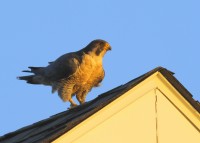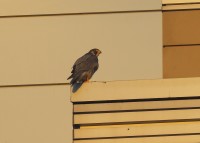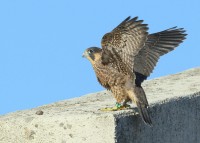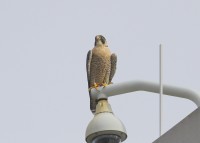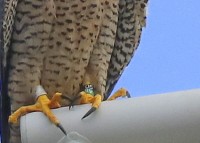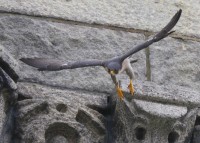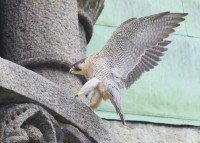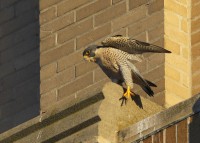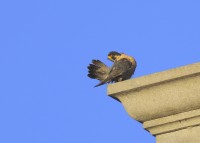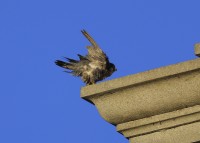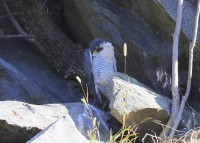Lawrence Peregrines and Crows!
October 31, 2017 in In the Nest Box
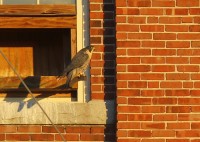 Made a late afternoon visit to the west side of the New Balance building complex and staked out a viewing location in a nearby truck trailer depot. This vantage point provided nice views of the entire west side of building complex and the Clock Tower. At one point, the adult male peregrine chased of a bunch of crows streaming a bit too close to the territorial perimeter of peregrine country.
Made a late afternoon visit to the west side of the New Balance building complex and staked out a viewing location in a nearby truck trailer depot. This vantage point provided nice views of the entire west side of building complex and the Clock Tower. At one point, the adult male peregrine chased of a bunch of crows streaming a bit too close to the territorial perimeter of peregrine country.
Each winter for the past many years, wintering American Crows have been gathering at sunset in large numbers. They tend to stage in smaller numbers at numerous nearby locations, and then make their way to the final roost in silver maple and river birch trees along both side of the Merrimack River, mostly on the west side of the Duck Bridge. It is a remarkable sight to watch!
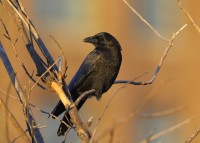 Here is excerpt from well known ornithologist A.C. Bent:
Here is excerpt from well known ornithologist A.C. Bent:
During the summer crows associate only in pairs at their isolated breeding places, but in fall they exhibit a marked gregarious inclination, and birds from many miles of territory congregate in immense roosts comprising thousands, sometimes tens and even hundreds of thousands, of individuals. These roosts are not only made up of the birds breeding in the region but the flocks are augmented by birds that have migrated from nesting grounds located farther to the north. In New England there is a marked tendency for the crows to move from inland areas to roosts established near the coast. Food is the primary factor involved in this shift; whereas the feeding grounds in the interior become covered with snow and ice, the seacoast provides an uninterrupted food supply that is replenished with every flow of the tide. Even the severe winter weather does not drive the hardy members from the roosts established in the dense coniferous forests that fringe the coast. Most of the roosts in northern New England are comparatively small, however, and one must go farther to the southward before meeting with aggregations of unusual size.
